TORONTO Public Health Wanted to Decriminilize Hard Drugs Including Meth, Coke, etc. SAFE according to Public Health is Meth. Remember that conversation point.
Safe supply is anything but. Data shows it fuels addiction.
Here is the Activists distributing SAFE SUPPLY OF COCAINE heroine and Meth to Canadian citizens. WATCH. Don't fall for the idea that free government drugs without fentanyl DOESN'T FUEL ADDICTION.
Kids are getting hooked on diverted SAFE SUPPLY on the market at $0.50 a pill. Then they need hard stuff.
Published Jun 20, 2024 • Last updated Jun 26, 2024 • 4 minute read
“Adam Zivo: Safer supply advocate admits kids likely use diverted opioids
Published Jun 20, 2024 • Last updated Jun 26, 2024 • 4 minute read
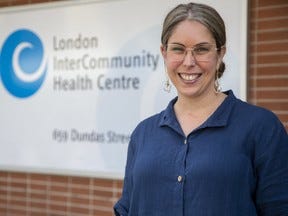
Article content
For over a year, the progenitor of Canada’s “safer supply” movement, Dr. Andrea Sereda, has publicly insisted that children do not access diverted safer supply drugs. Yet in a video presentation made to a group of harm-reduction activists earlier this month, which Sereda apparently believed was a safe space among like-minded advocates, her narrative seemed quite different.
“I’m not going to stand up here and say that some kids, some adolescents, are not accessing diverted safe supply and using diverted safe supply. Kids experiment with everything, and we need to be honest to ourselves that kids probably experiment with diverted safer supply as well,” Sereda said during the annual general meeting of Moms Stop The Harm (MSTH), an advocacy group that champions radical harm-reduction policies.
Her comment comes amid a raucous national debate about whether safer supply programs, which distribute free addictive drugs as an alternative to riskier street substances, are actually exacerbating, rather than mitigating, the national overdose crisis.
These experimental programs predominantly distribute hydromorphone, an opioid as potent as heroin, as an alternative to illicit fentanyl. While advocates claim this practice “saves lives,” a series of investigative stories by the National Post has shown that safer supply clients often divert (sell or trade) their free hydromorphone to acquire stronger street substances, which then floods communities with the drug and fuels new addictions among both adults and youth.
Harm-reduction activists have vehemently denied that safer supply diversion is a serious issue that poses a threat to kids. Sereda’s voice has been particularly influential, as she founded Canada’s first safer supply program in 2016 — a pilot project at the London InterCommunity Health Centre (LIHC) in London, Ont. — which set the foundation for the experiment’s nationwide expansion.
Shortly after the National Post spotlighted safer supply diversion in May 2023, Sereda told the London Free Press that, “Not a single physician critic of safer supply has been able to provide us with an example of medications being sold to children. This seems to be the boogeyman of safer supply. It is silly.”
While testifying at the House of Commons health committee in February, she again emphasized this message.
“Do you agree that it’s possible that diverted opioids are ending up in the hands of people they aren’t prescribed to, or even children, yes or no?” asked MP Todd Doherty, to which Sereda replied, “We have no evidence that they (safer supply hydromorphone tablets) are ending up in the hands of children.
While MSTH publicly shared a recording of its annual general meeting on YouTube, participants were asked to register ahead of time.
Sereda’s presentation appeared to have been prepared for an insider audience.
She lauded the Drug User Liberation Front’s distribution of “unadulterated crystal meth and cocaine,” and said, “If physicians could prescribe that, and this is where I’m afraid there’s a mole like on that other Zoom call earlier this week, right? But if physicians could prescribe crystal meth and cocaine, I think we would actually start to get somewhere.”
Meanwhile, the National Safer Supply Community of Practice, a “knowledge exchange initiative” led by the LIHC, infamously published a document in 2022 that advised doctors to look the other way if patients resell their safer supply drugs on the black market.”
https://nationalpost.com/opinion/behind-closed-doors-safer-supply-advocates-admit-opioids-are-being-diverted
Public Health pushes for drug decriminalization?
https://globalnews.ca/video/10501893/ontario-warns-toronto-to-drop-proposal-to-decriminalize-drugs-for-personal-use
“The city first submitted its decriminalization request in January 2022 and updated it in 2023.
"Health Canada presented Toronto Public Health with a series of questions meant to address some of the concerns raised about the proposal," Saks said.
Not only did Toronto's application seek to decriminalize personal possession of "all" controlled drugs and substances, but Saks said it did not set limits on how much one person was allowed to possess.
The application from Toronto Public Health also did not include age restrictions, unlike a similar pilot project in British Columbia," she said.”
No age limit?
RESULT-Cannot get it out of schools.
All hard drugs in schools?
RESULT- massive addiction presented to a vulnerable population already under psychological attack.
No limit to amount?
RESULT - trafficking in schools.
“Dane Griffiths said the agency was informed of Ottawa's decision to reject its application on May 17, the same day it was announced publicly.
In a statement, he said decriminalization is but one "evidence-informed policy tool to help remove barriers to care."
https://www.cbc.ca/news/canada/toronto/toronto-drug-decriminalization-rejected-1.7213620
Public Health follow the same Drum beat.
As we get into mandatory vaccine under Emergency Use Authorization by passing safety studies Season, you remember Public Health thinks fentanyl is also safe.
Harm “reduction"?
“Decriminalization is intended to reduce the stigma and criminalization that can prevent people who use drugs from accessing health and social services, and drive people to use alone where there is nobody to respond in the event of a drug poisoning event. It has been undertaken in part out of recognition that some groups have been more harmed by the criminalization of drugs than others, including but not limited to Indigenous, Black, and other racialized communities who experience disproportionate police interactions.
It is intended to approach substance use as a health matter and not a criminal justice issue, and to support pathways into the substance use system of care. ”
http://www.bccdc.ca/health-info/prevention-public-health/decriminalization-in-bc
Nice hallmark card write up from BC CDC.
What's killing kids in BC the decrim province in Canada on our left coast (think our Oregon) from 2017 to 2022? Now imagine it was decriminlized without an age limit.
Undetermined??? Is that the doctors are baffled category? But remember if the coroner didn't get the file it isn't part of this.
And death by drugs is number one.
Bout with pandemic?
I don't see it.
Adam Zivo: B.C. NDP's disastrous decriminalization plan was never going to work
Premier David Eby only scaling back now that his poll numbers are dropping
Published Apr 29, 2024 • Last updated Apr 29, 2024 • 4 minute read
Article content
The B.C. NDP is scaling back its drug decriminalization experiment after skyrocketing crime and public disorder spurred an indignant backlash throughout the province. While this is a welcome development, Premier David Eby’s belated pivot deserves little praise.
When the province decriminalized drugs early last year, many people, myself included, predicted that it would be a disaster. While there are a variety of ways to approach decriminalization, some of which are productive, the model embraced by Eby was reckless and lazy.
In Portugal, the seminal example of success for drug policymakers, “decriminalization” never granted drug users the near-unlimited freedom they enjoy in B.C.. Instead, individuals caught possessing or openly using small amounts of drugs are sent to non-criminal “dissuasion commissions” that can use punitive measures, such as fines, to coerce people into highly-accessible treatment services.
The Portuguese model was never meant to exempt addicts from the social contracts that govern public life. It was never meant to normalize open drug use. All it did, at first, was build an alternative justice system that had vigorous mechanisms in place to divert addicts away from jails and into rehab. This was a sensible approach that demonstrably saved lives and reduced the spread of infectious diseases.
Portugal’s early successes faded over time, however, as budget cuts gnawed away at the country’s treatment capacity and forced the government to outsource addiction services to nonprofit groups. Overdoses, deaths and crime rose as these groups prioritized providing “non-judgemental” harm reduction services over pressuring addicts into treatment. These days, the system has become so dysfunctional that a growing chorus of voices is calling for reform and partial re-criminalization.
Despite this fall from grace, the early years of the Portuguese model, when treatment was prioritized, remain a powerful case study of success. Had B.C. made a serious attempt to adopt this approach, perhaps all would have been well — but that is not what happened.
Instead, the B.C. NDP decided to simply let drug users run wild, without consequences. Investment into treatment capacity was neglected and no mechanisms were developed to maintain public order or pressure addicts into getting better. Policymakers assumed that simply “destigmatizing” drug use would improve treatment uptake — but that hypothesis, which was never really evidence-based, turned out to be spectacularly wrong.
Drug use soared. Crime exploded. Carnage. Assaults. Syringes proliferated in playgrounds. A narcotic haze fell over certain neighbourhoods, seeping outward. Traffickers rejoiced in their newfound impunity. And still, overdoses and deaths climbed higher. Blue lips. Parades of ambulances. Lives extinguished. Real human beings, dead. Brothers. Sisters. Parents. Children. Where were the promised benefits? Missing in action. Fictitious. Everything got worse.”
JUDGE IN BC RULES DRUG USE A HUMAN RIGHT
I didn't look. Anyone has time might want to check if it's a liberal appointment.
public places through a new provincial law last autumn (“Bill 34”), but only after voters’ exasperation made it impossible not to. The enforcement of that law was immediately stymied by a court injunction, which was granted in January when Chief Justice of the Supreme Court of B.C. Christopher Hinkson decided that public drug use — something banned until five seconds ago — might actually constitute a human right. Hinkson made this determination using the flimsiest of evidence and logic.
Recommended from
1 minute ad of before and after Trudeau.
LOOK. if your sheep friends live AND DIE by pronouncements from public health, ask them if they need some SAFE heroine with their SAFE booster.
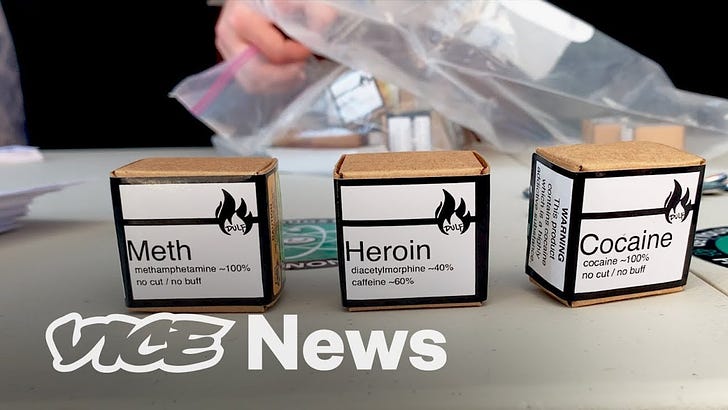


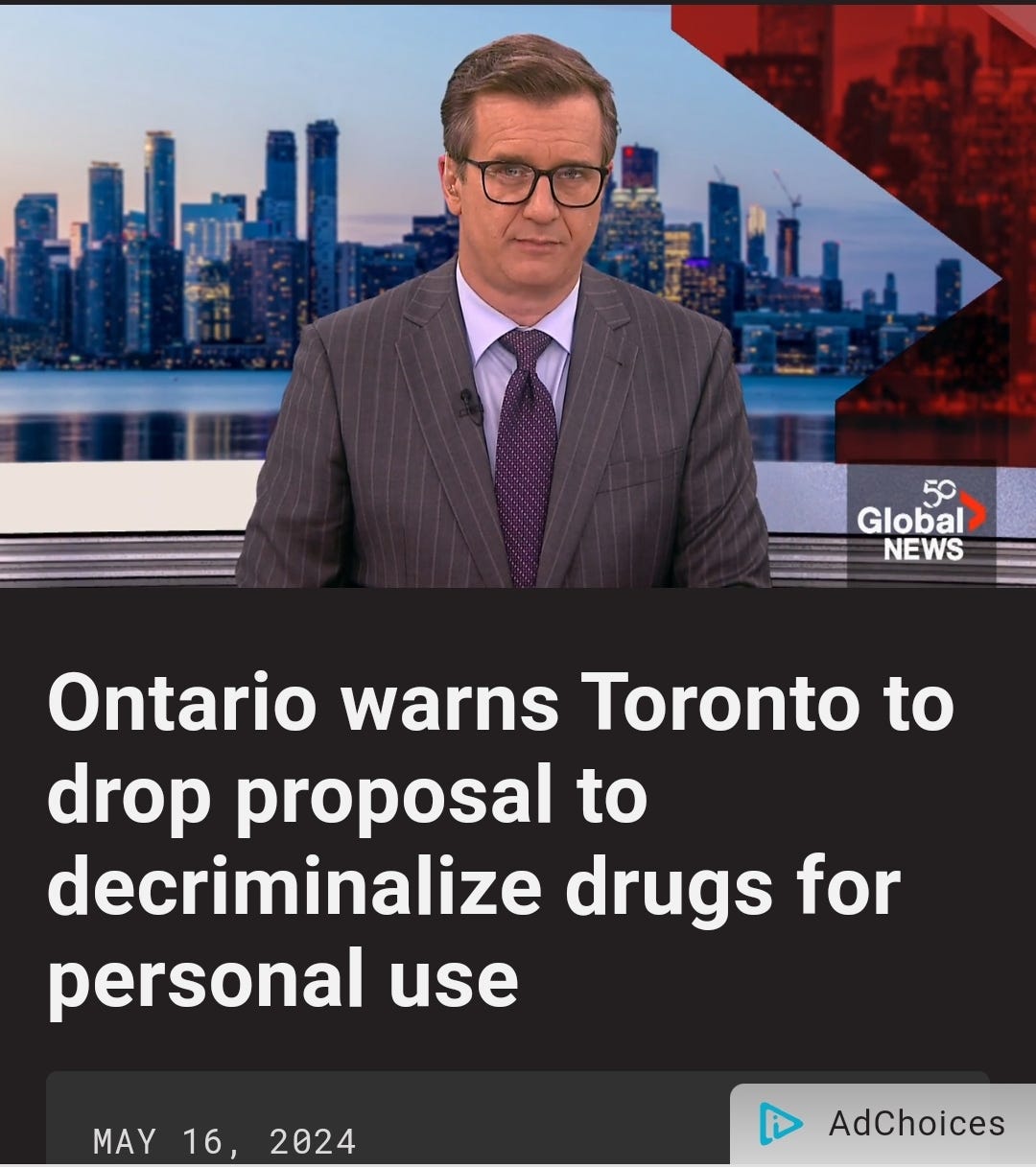

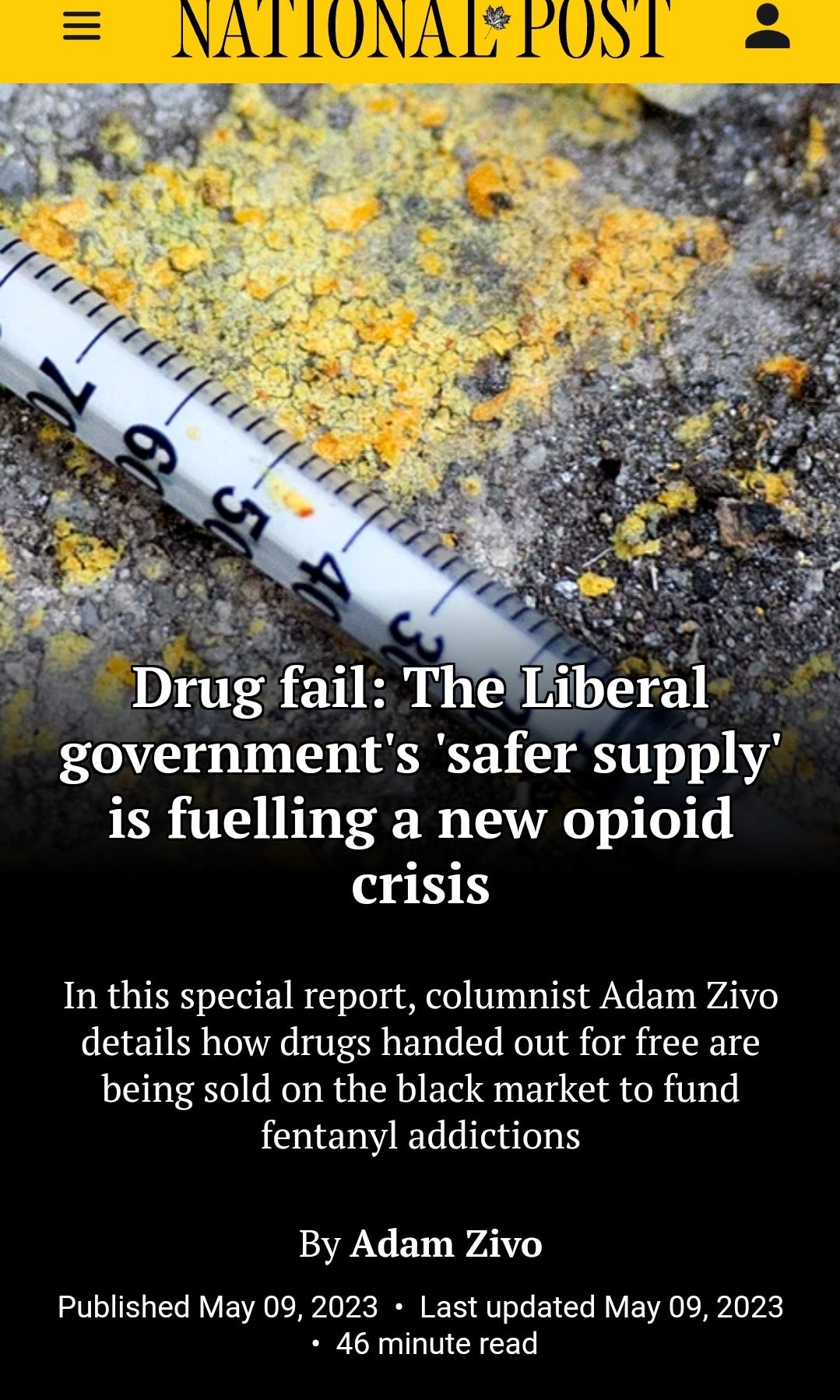
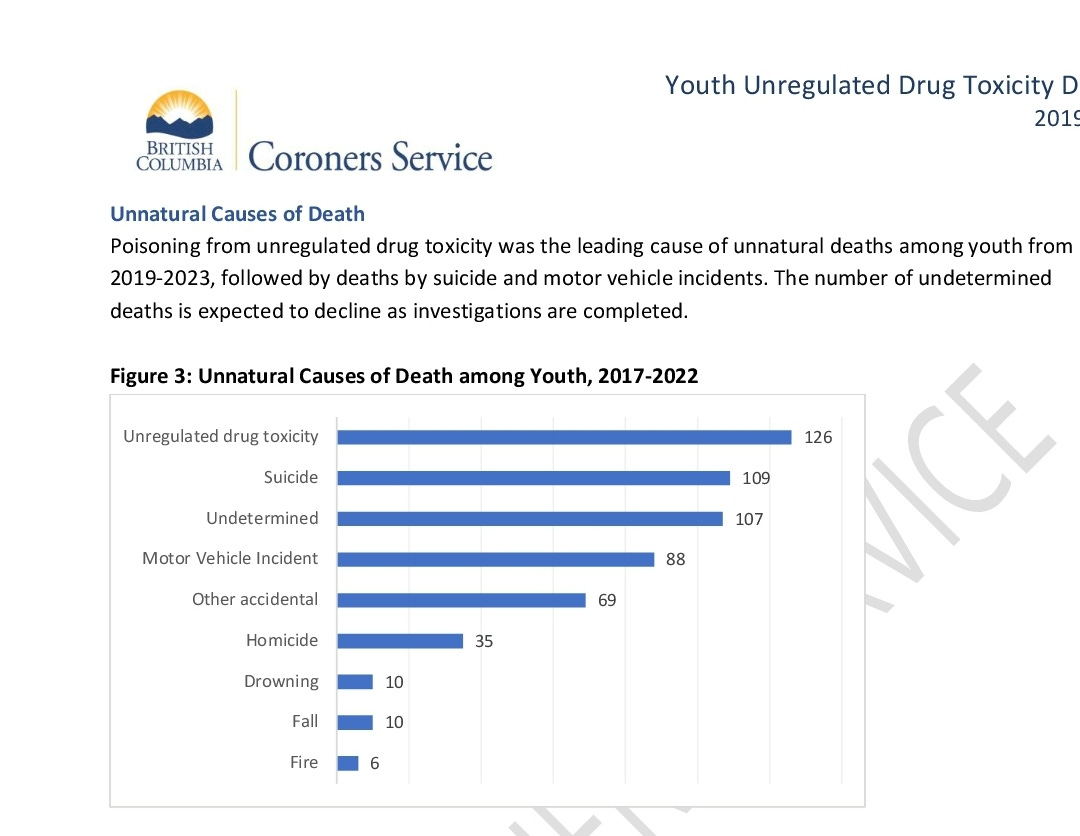
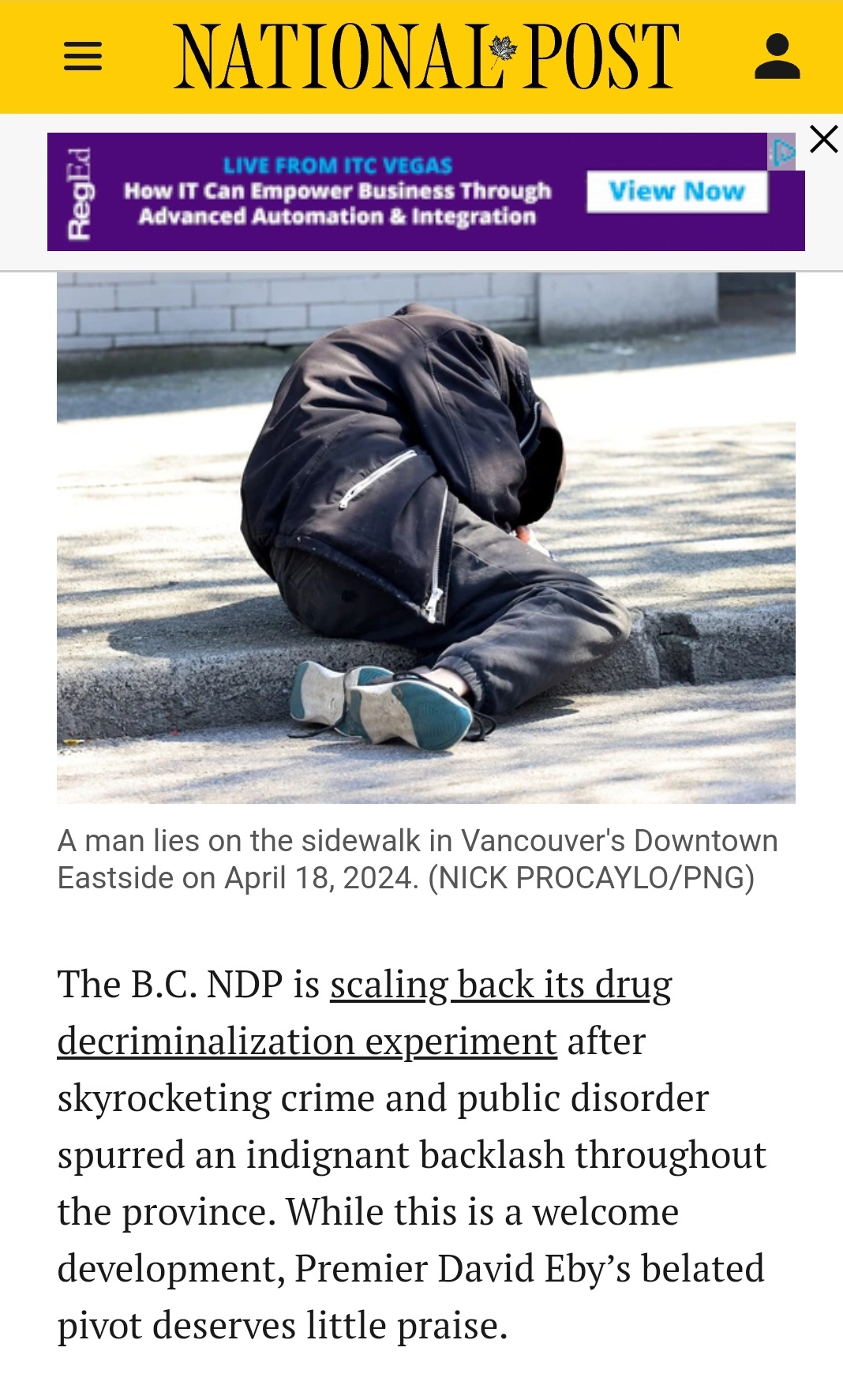
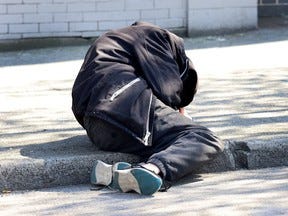
DEPOP.
Toronto Public Health perhaps think that because Elon Musk has confessed to using cocaine, ecstasy, marijuana, mushrooms, ketamine and LSD he is a good role model. They perhaps pay disproportionate attention to his claim in May of this year that his use of ketamine is good for Tesla investors because it helps him run Tesla better and the fact that he's the self made world's richest man. All drugs have dangers even if some have benefits. Do they think that drugs will turn the youth of Toronto into multi-billionaire entrepreneurs with the ideology of George Soros? Toronto Public Health probably ignore that after all his years of drug use Musk is no longer a progressive and is now appearing on stage at Trump rallies and has endorsed Trump for president.